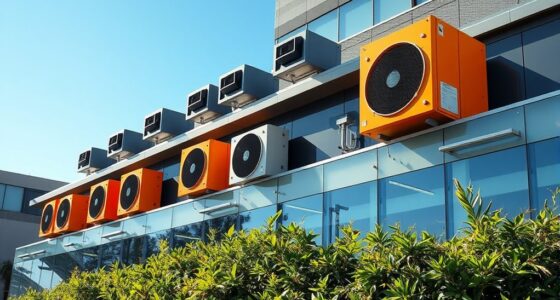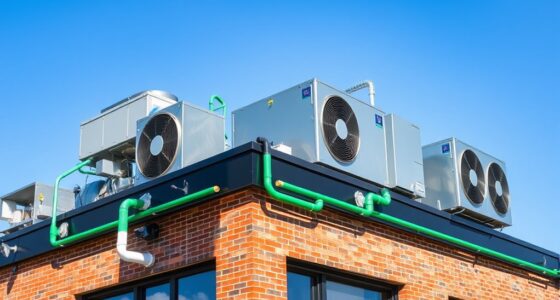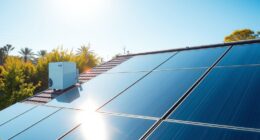We have carried out an exhaustive examination of the efficiency of heat pumps in home environments. This article will explore the elements that influence performance, compare various models, and offer advice on enhancing efficiency.
We’ll also explore the crucial role of proper sizing and insulation, as well as the benefits of regular maintenance.
Through case studies, we’ll highlight real-life examples of how improved heat pump efficiency can save energy and enhance comfort in your home.
Let’s dive in and discover how to maximize your heat pump’s potential.

Key Takeaways
- SEER, HSPF, and EER ratings provide objective comparisons of different heat pump models, helping homeowners choose energy-efficient options.
- Climate greatly impacts heat pump performance, with extreme temperatures and high humidity reducing efficiency.
- Regular maintenance and servicing, including cleaning or replacing filters and inspecting coils, are crucial for optimal heat pump performance.
- When comparing different heat pump models, it’s important to consider the cost versus efficiency trade-off, performance in extreme temperatures, potential energy savings, and the availability of government incentives and rebates.
Understanding Heat Pump Efficiency Ratings
We’ll begin by explaining the different heat pump efficiency ratings.
Understanding heat pump efficiency measurement is crucial for homeowners who want to make informed decisions about their energy consumption. Heat pump efficiency ratings provide an objective way to compare the performance of different models and determine their energy efficiency.
The most common rating is the Seasonal Energy Efficiency Ratio (SEER), which measures the cooling efficiency of a heat pump. Another important rating is the Heating Seasonal Performance Factor (HSPF), which assesses the heating efficiency. Additionally, the Energy Efficiency Ratio (EER) measures the cooling efficiency at a specific outdoor temperature.
By understanding these ratings, homeowners can ensure that they choose a heat pump that meets their specific needs and minimizes energy consumption.

Now, let’s explore the factors affecting heat pump performance in residential settings.
Factors Affecting Heat Pump Performance in Residential Settings
When it comes to heat pump performance in residential settings, there are several factors that can significantly impact its efficiency.
One key factor is the climate in which the heat pump operates. Extreme temperatures, whether hot or cold, can put additional strain on the system and affect its ability to efficiently heat or cool the space.
Additionally, regular maintenance and servicing are crucial for optimal performance, as dirty filters or malfunctioning components can hinder the heat pump’s efficiency.
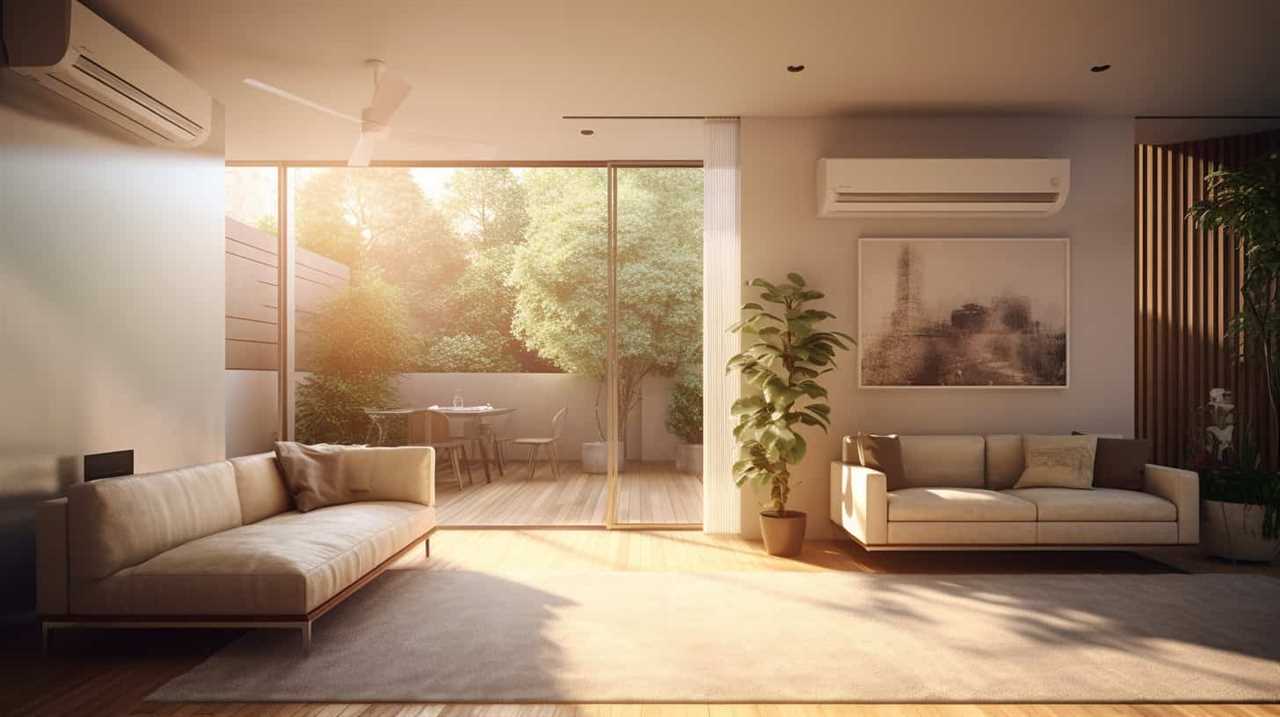
Climate Impact on Performance
Analyzing the climate is crucial in understanding the factors that affect the performance of heat pumps in residential settings. The climate plays a significant role in determining the efficiency and energy consumption of heat pumps, especially in the context of climate change.
Here are three key factors to consider:
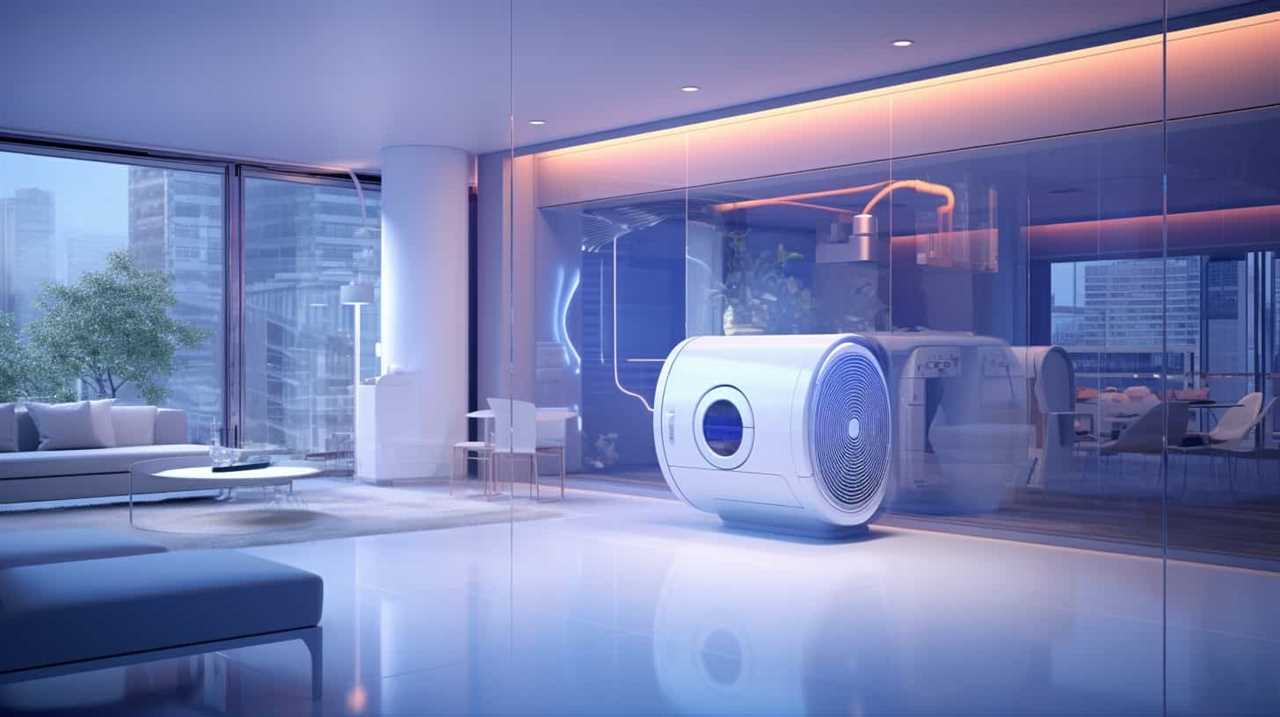
-
Temperature: Heat pumps work by transferring heat from the outside to the inside of a building. In colder climates, heat pumps need to work harder to extract heat from the outside air, leading to higher energy consumption.
-
Humidity: High humidity levels can affect the heat transfer process, reducing the efficiency of heat pumps. Proper humidity control is essential to ensure optimal performance.
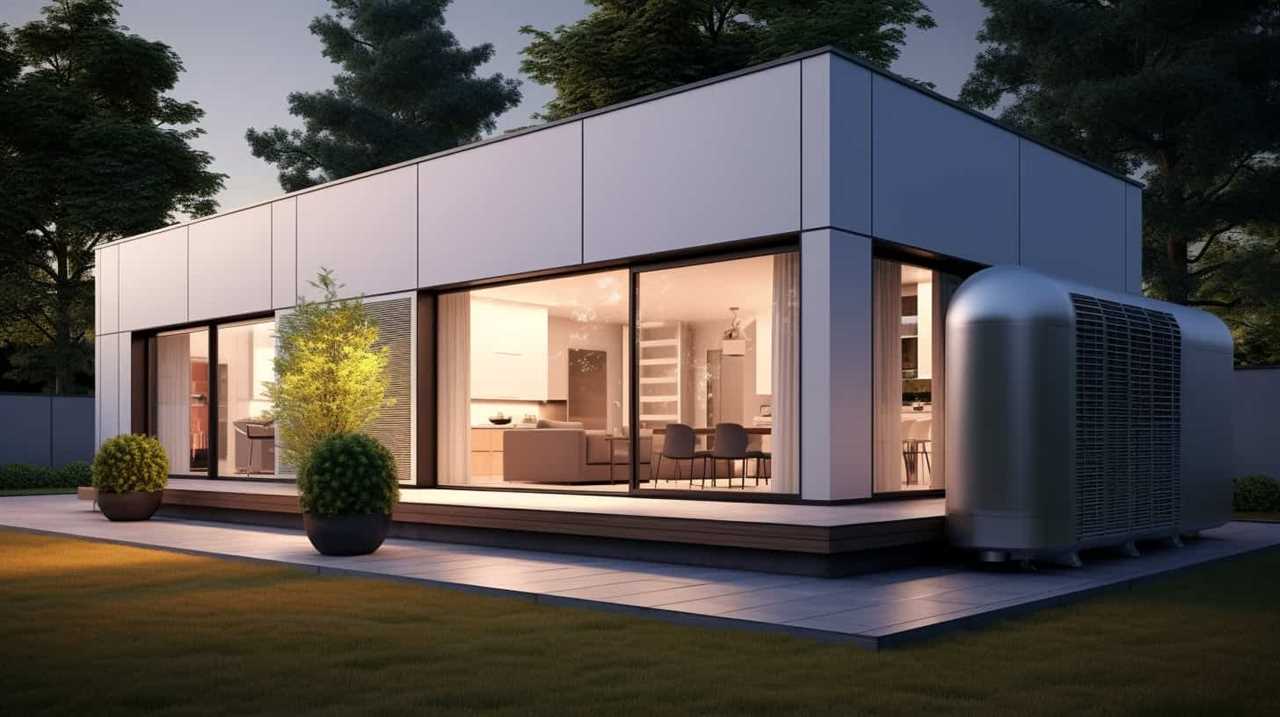
-
Seasonal variations: Different seasons bring different challenges for heat pumps. For instance, extreme temperatures in summer or winter can put additional strain on the system, impacting its performance.
Understanding these climate-related factors is crucial for homeowners and HVAC professionals to optimize the performance of heat pumps in residential settings. By considering these factors, homeowners can make informed decisions about maintenance and servicing to ensure their heat pumps operate at peak efficiency.
Maintenance and Servicing
To ensure optimal performance of heat pumps in residential settings, regular maintenance and servicing are essential factors that significantly affect their efficiency. By following some simple maintenance tips and addressing common issues, homeowners can maximize the lifespan and efficiency of their heat pump systems.
Here are some maintenance tips to keep in mind:
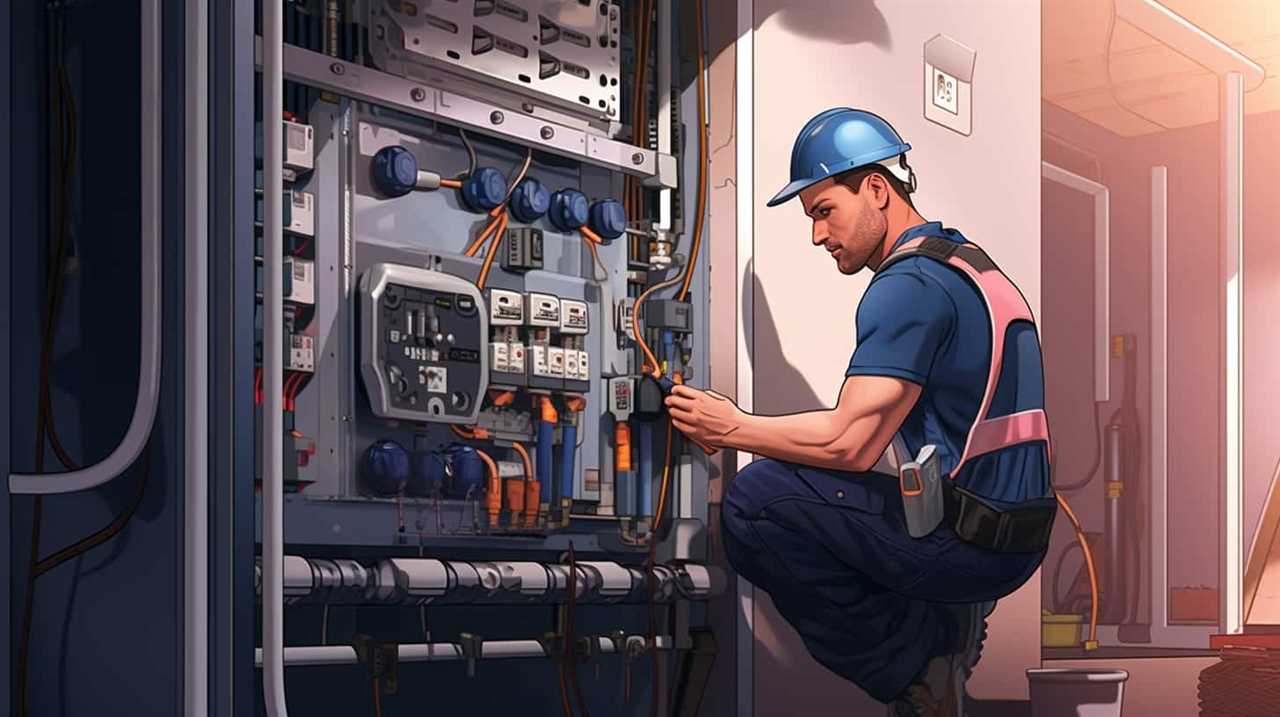
-
Clean or replace air filters regularly to ensure proper airflow and prevent debris buildup.
-
Check and clean outdoor coils to remove dirt and debris that can hinder heat transfer.
-
Inspect and clean the indoor evaporator coil to maintain efficient heat exchange.
-
Keep the area around the outdoor unit clear of any vegetation or obstructions.
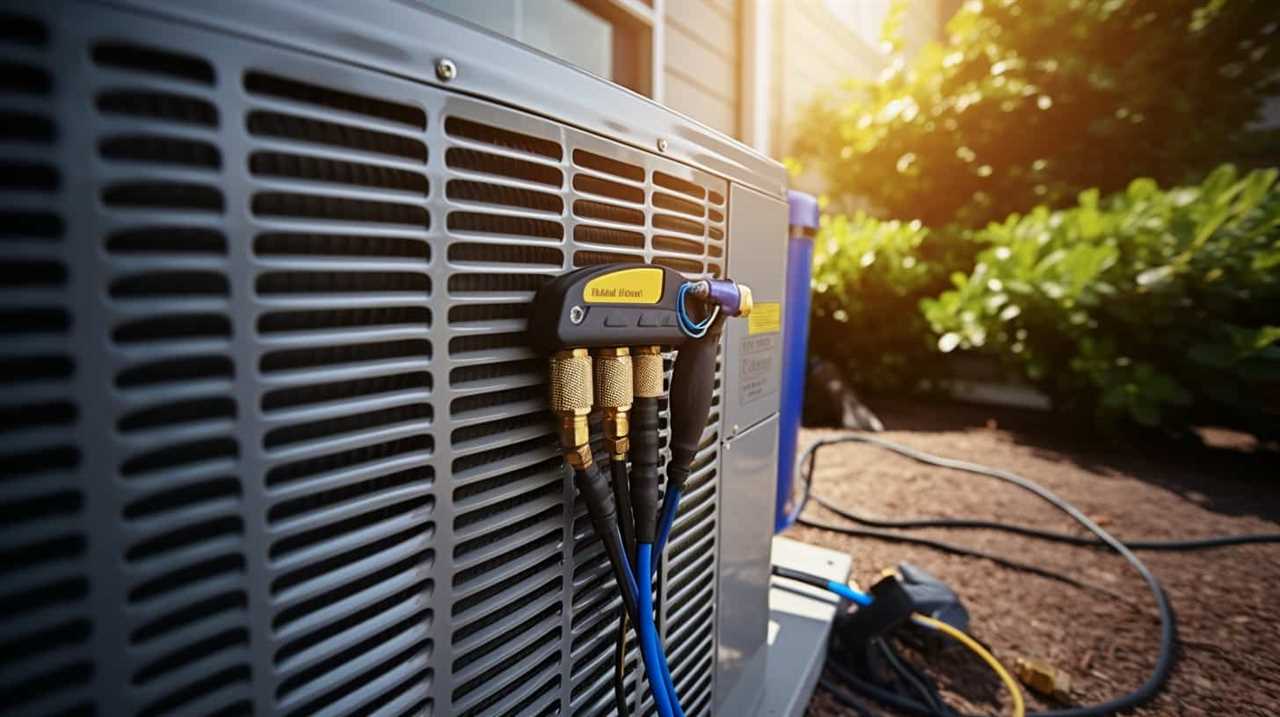
By addressing these maintenance tasks, homeowners can prevent common issues such as reduced heating or cooling performance, increased energy consumption, and system breakdowns.
Regular maintenance and servicing not only improve the efficiency of heat pumps but also extend their lifespan, saving homeowners from costly repairs or replacements.
Comparing Energy Efficiency of Different Heat Pump Models
When comparing the energy efficiency of different heat pump models, there are several key points to consider.
First, we need to analyze the cost versus efficiency trade-off, as higher efficiency models often come with a higher price tag.
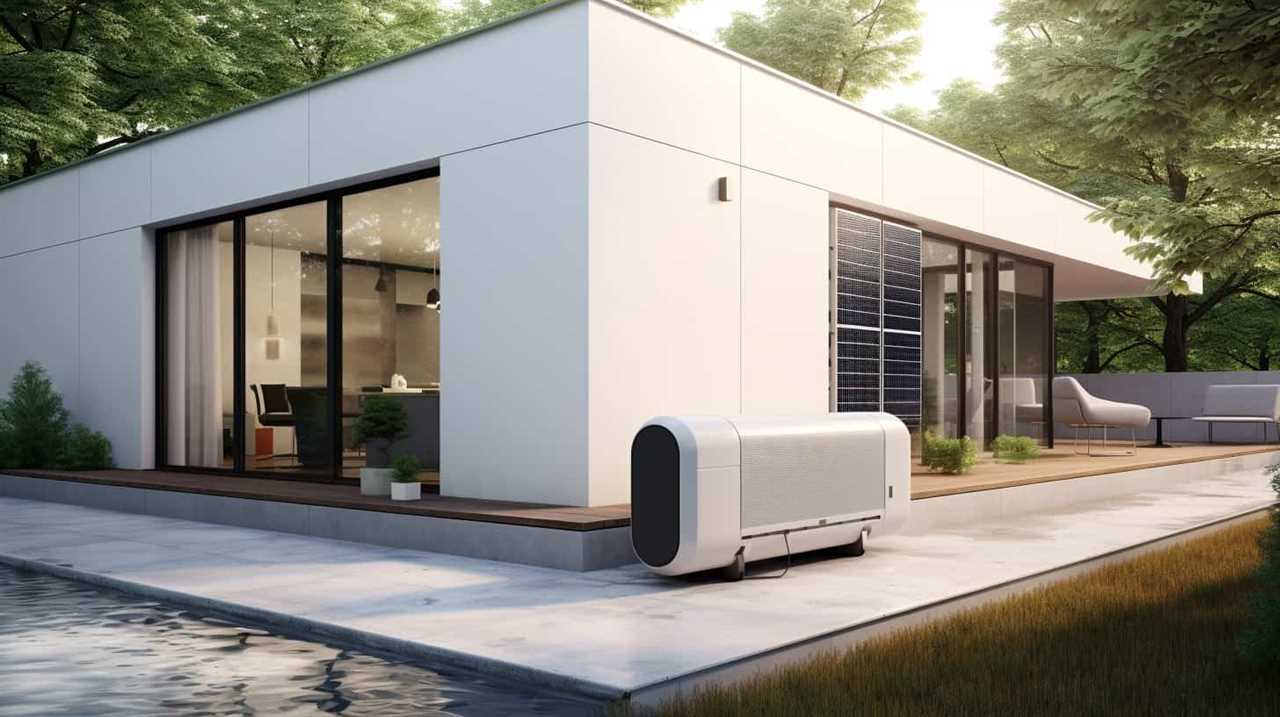
Second, it’s crucial to examine the performance of these models in extreme temperatures, as this can greatly impact their overall efficiency.
Lastly, we must assess the potential energy savings that can be achieved by using these heat pumps, as this is a significant factor in determining their long-term efficiency and cost-effectiveness.
Cost Vs. Efficiency
We have examined the energy efficiency of different heat pump models and compared their costs. When it comes to cost comparison, it’s important to consider the initial investment, as well as the long-term energy usage.
Here are three key factors to consider:

-
Energy Savings: Investing in a high-efficiency heat pump may result in significant energy savings over time. This can lead to lower utility bills and increased cost-effectiveness in the long run.
-
Maintenance Costs: Some heat pump models may require more frequent maintenance or replacement of parts, which can add to the overall cost of ownership.
-
Government Incentives: It’s worth exploring any available government incentives or rebates for energy-efficient heat pump installations, as this can help offset the initial cost.
Considering these factors, it’s crucial to find the right balance between cost and efficiency when selecting a heat pump for your home.
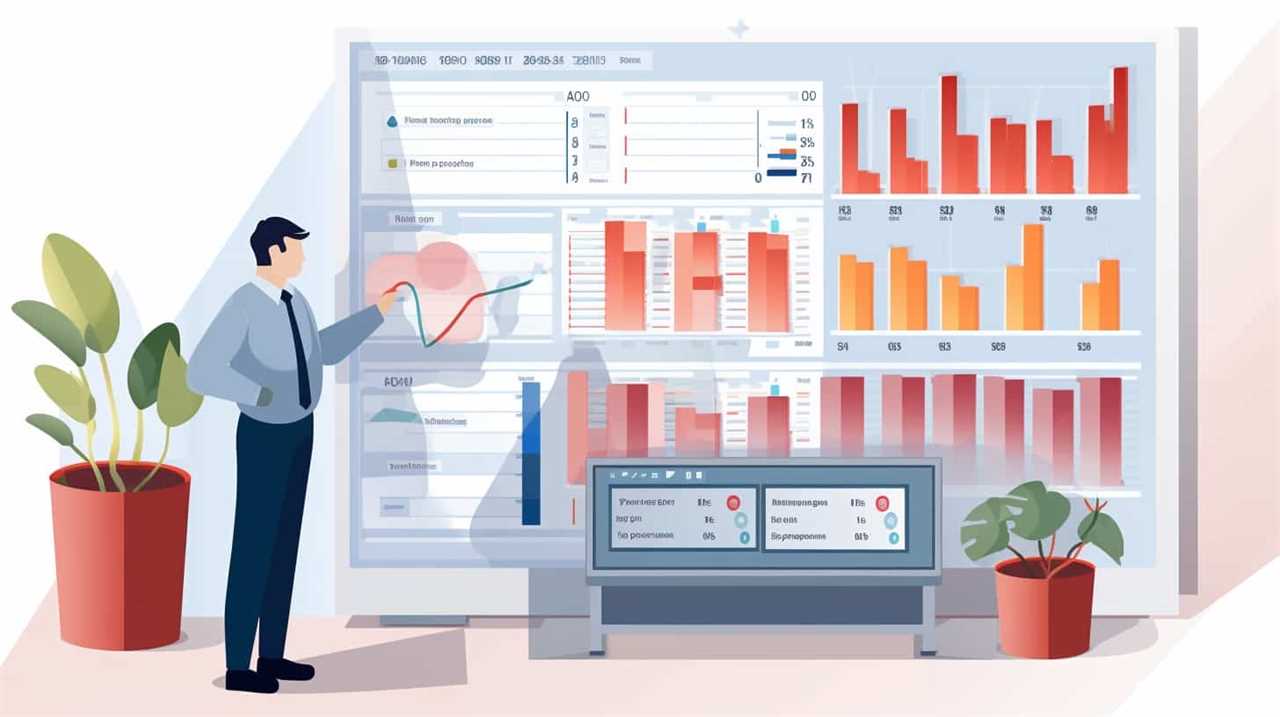
Transitioning into the next section, let’s now explore the performance of heat pumps in extreme conditions.
Performance in Extremes
But, we should also compare the energy efficiency of different heat pump models in extreme conditions. Performance in extreme temperatures and the impact of humidity on heat pump efficiency are crucial factors to consider when selecting a heat pump for residential use. Heat pumps are designed to work efficiently in a wide range of temperatures, but their performance can vary significantly in extreme heat or cold. In extremely low temperatures, the heat pump’s ability to extract heat from the outside air decreases, resulting in reduced efficiency. On the other hand, high humidity levels can affect the heat pump’s ability to remove moisture from the indoor air, impacting its overall performance. To help you understand the energy efficiency of different heat pump models in extreme conditions, here is a comparison table showcasing their performance in various temperature ranges and humidity levels:
| Heat Pump Model | Extreme Cold Performance | Extreme Hot Performance | Impact of Humidity |
|---|---|---|---|
| Model A | Excellent | Good | Low |
| Model B | Good | Average | Moderate |
| Model C | Average | Poor | High |
Energy Savings Potential
To accurately assess the energy savings potential, we’ll compare the efficiency of different heat pump models. By doing so, we can determine which models offer the greatest energy-saving strategies and financial benefits.
Consider the following key points:
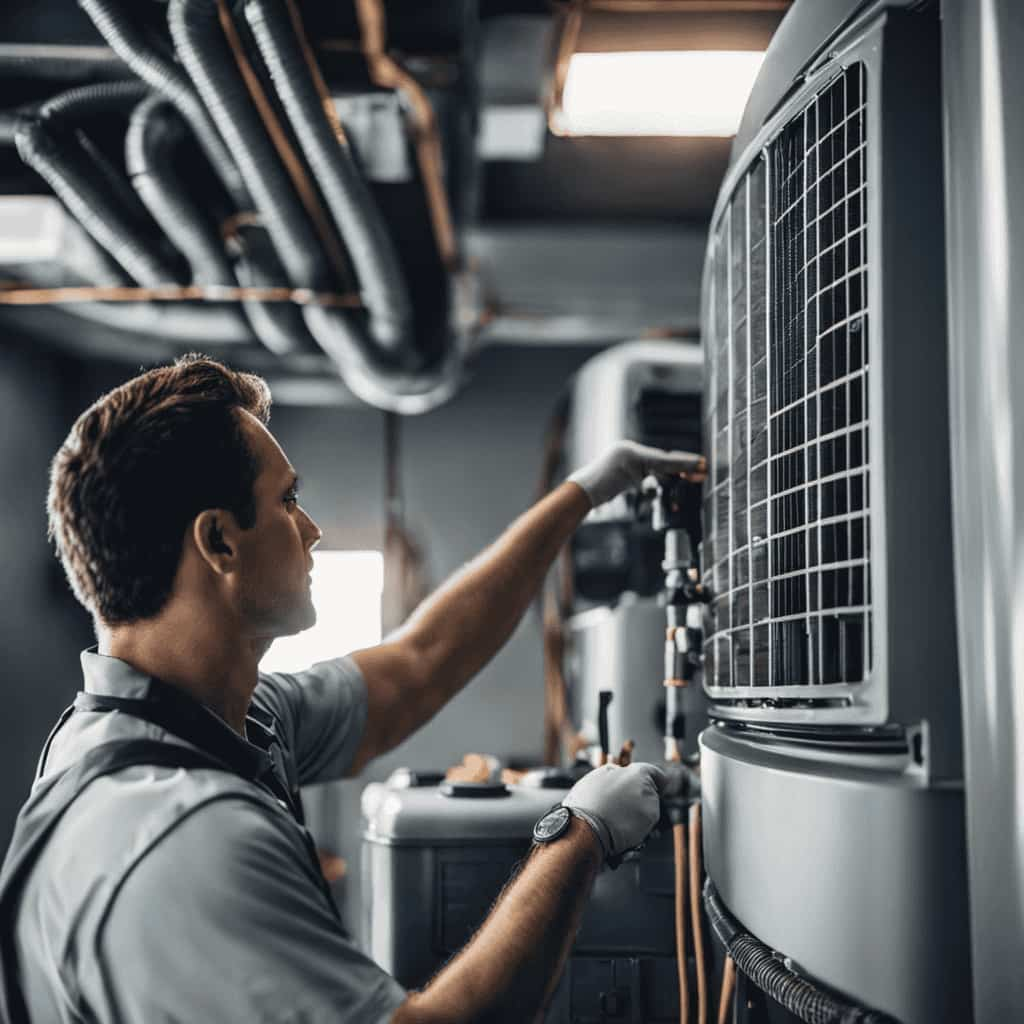
-
Advanced Technology: Some heat pump models integrate innovative technology, such as variable-speed compressors, which allow for more precise temperature control and reduced energy consumption.
-
Seasonal Energy Efficiency Ratio (SEER): Higher SEER ratings indicate greater efficiency and potential for energy savings. Models with SEER ratings above 16 are generally considered more energy-efficient.
-
Heating Seasonal Performance Factor (HSPF): Similar to SEER, a higher HSPF rating indicates better efficiency during the heating season. Models with HSPF ratings above 8 are typically more energy-saving.
Tips for Improving Heat Pump Efficiency in Your Home
Our homes can become more energy efficient by implementing these simple tips to improve heat pump efficiency.
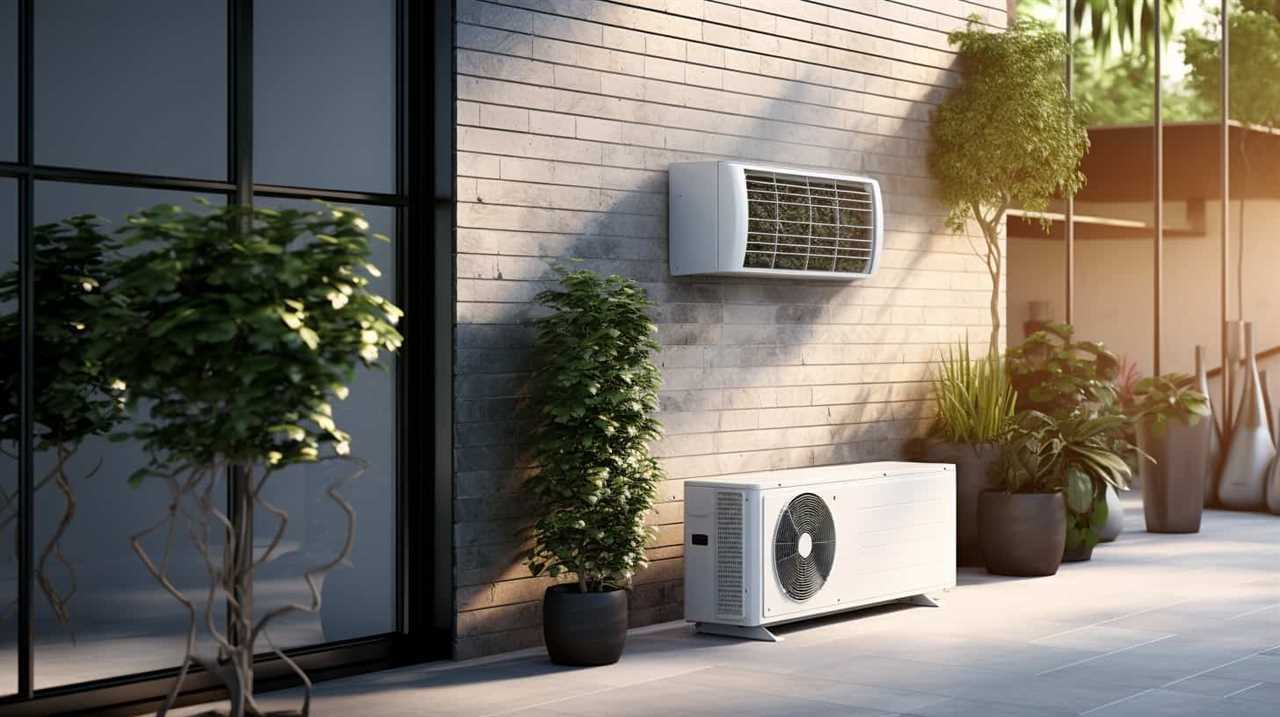
One way to improve airflow is by regularly cleaning or replacing air filters. Clogged filters restrict airflow, causing the heat pump to work harder and consume more energy.
It’s also important to keep the outdoor unit free from debris and vegetation, as this can obstruct airflow.
Another tip is to optimize thermostat settings. Setting the thermostat to a comfortable yet energy-saving temperature can significantly reduce energy consumption. Using a programmable thermostat allows you to automatically adjust the temperature based on your schedule, ensuring efficient operation when you’re away.
Additionally, sealing air leaks and insulating your home properly can prevent heat loss or gain, further improving the heat pump’s efficiency.
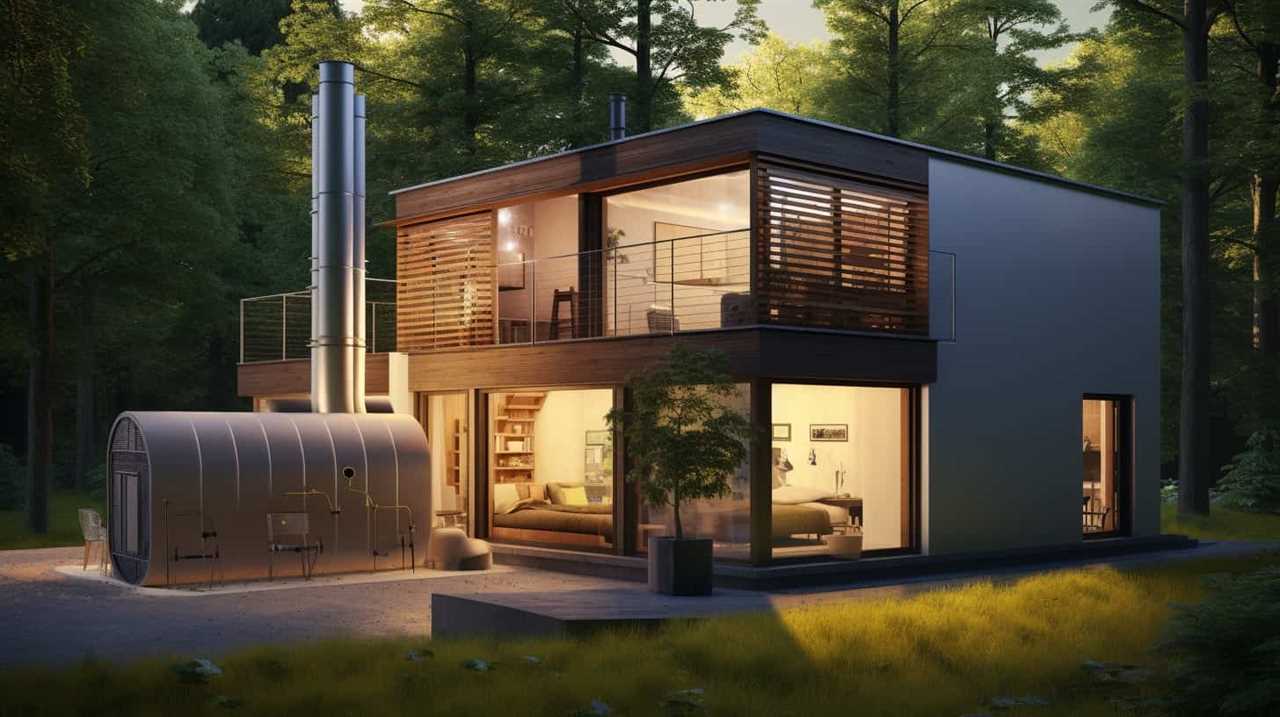
The Importance of Proper Sizing for Optimal Heat Pump Efficiency
Proper sizing plays a vital role in achieving optimal heat pump efficiency. When it comes to heat pumps, size does matter. Here are three key reasons why proper sizing is crucial for maximizing energy efficiency and ensuring optimal performance:
-
Avoiding energy waste: A heat pump that’s too large for your home will cycle on and off frequently, resulting in inefficient operation and unnecessary energy consumption.
-
Preventing inadequate heating or cooling: On the other hand, a heat pump that’s too small will struggle to reach and maintain your desired temperature, leading to discomfort and potential strain on the system.
-
Extending equipment lifespan: Properly sized heat pumps operate more efficiently, reducing wear and tear on the system. This can lower the need for repairs and extend the lifespan of your equipment.
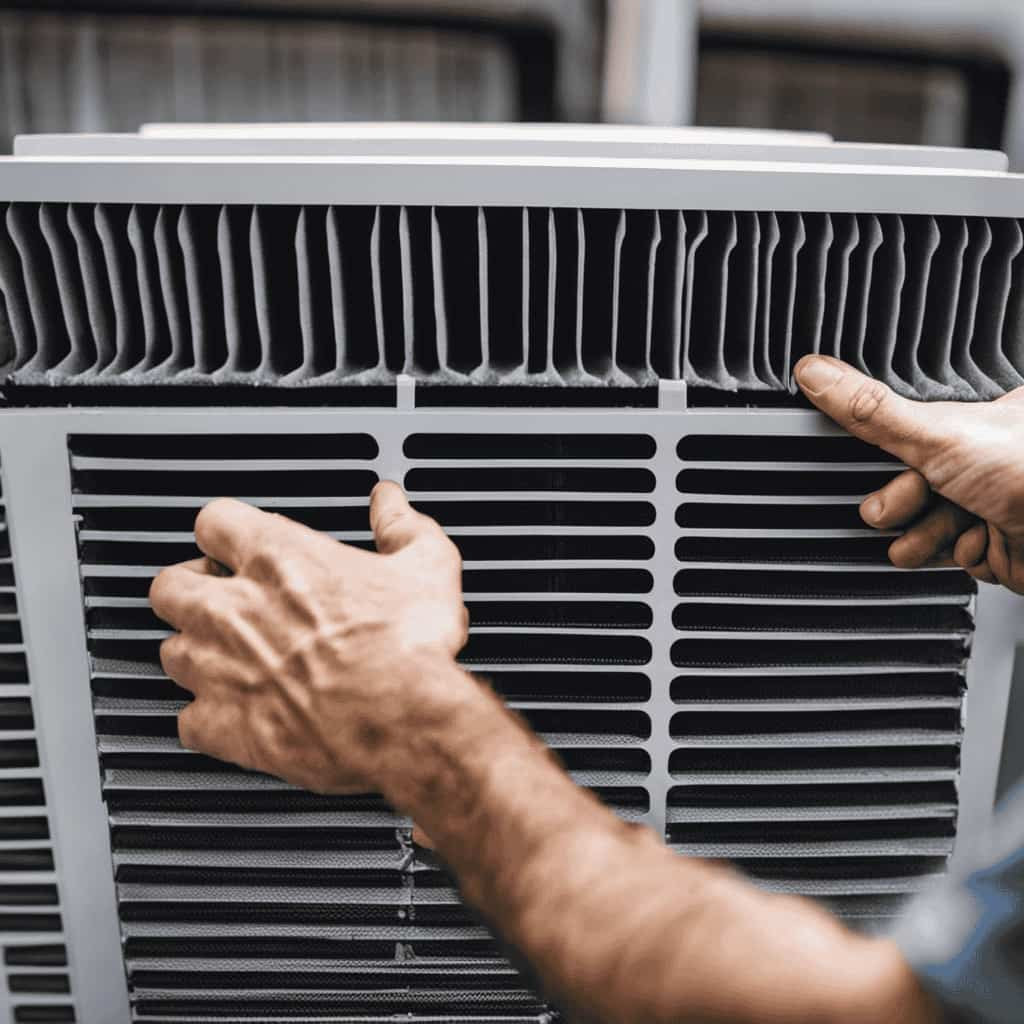
By understanding the importance of proper sizing and ensuring regular maintenance, homeowners can achieve optimal heat pump efficiency and minimize their energy consumption.
Now, let’s explore the role of insulation in heat pump performance.
Exploring the Role of Insulation in Heat Pump Performance
We can improve heat pump performance by exploring the role of insulation in our homes. Proper insulation plays a crucial role in reducing heat transfer and ensuring that the heat produced by the heat pump remains inside the house. Insulation helps in maintaining a comfortable indoor temperature while reducing the workload on the heat pump, leading to improved efficiency and lower energy consumption.
When considering insulation for heat pump performance, it is essential to understand the different types of insulation available. Common insulation types include fiberglass batts, cellulose, spray foam, and rigid foam boards. Each insulation type has its own advantages and disadvantages, and the choice depends on factors such as cost, insulation value, and installation requirements.
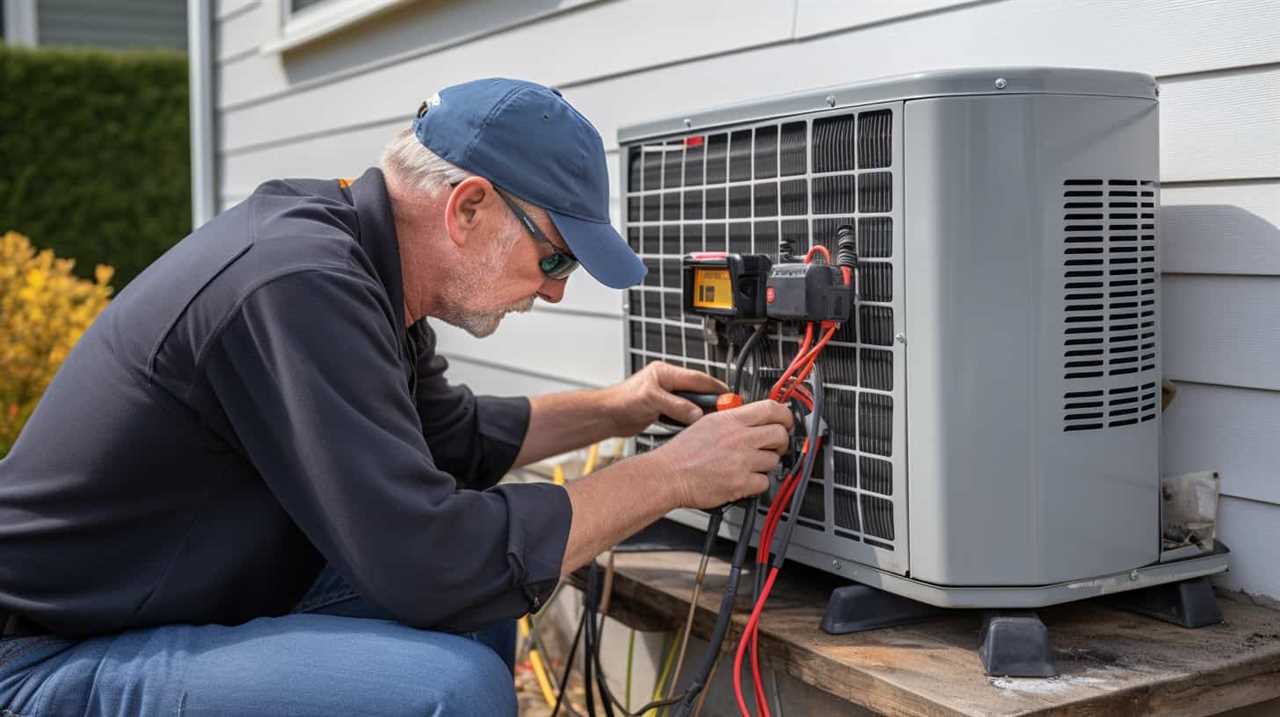
Speaking of installation, proper insulation installation techniques are vital for maximizing heat pump efficiency. Poorly installed insulation can result in gaps, voids, or compressed insulation, which can diminish its effectiveness. It is crucial to ensure airtightness and proper coverage to prevent heat loss or gain.
In summary, selecting the right insulation type and employing proper installation techniques are integral to optimizing heat pump performance. By investing in quality insulation and ensuring its correct installation, homeowners can enhance energy efficiency, reduce heating and cooling costs, and create a more comfortable living environment.
| Insulation Type | Advantages | Disadvantages |
|---|---|---|
| Fiberglass Batts | Affordable | Prone to air leakage |
| Cellulose | Good thermal performance | Susceptible to moisture |
| Spray Foam | Excellent air sealing | Higher initial cost |
| Rigid Foam Boards | High insulation value | Difficult to retrofit |
Enhancing Heat Pump Efficiency Through Regular Maintenance
To enhance heat pump efficiency, regular maintenance is essential and can be achieved through actions such as cleaning the filters and coils, lubricating the fan motor, and inspecting for any refrigerant leaks.
By performing these maintenance tasks, homeowners can reap several heat pump maintenance benefits, including increased energy efficiency. Regularly cleaning the filters and coils ensures optimal airflow and prevents dust and debris from clogging the system, which can lead to decreased performance and higher energy consumption.

Lubricating the fan motor reduces friction and wear, allowing the motor to operate smoothly and efficiently. Inspecting for refrigerant leaks is crucial as even small leaks can significantly impact the heat pump’s performance and energy efficiency.
Evaluating the Energy Savings Potential of Heat Pump Upgrades
When evaluating the energy savings potential of heat pump upgrades, it’s important to consider the long-term benefits and cost-effectiveness of the investment.
Upgrading your heat pump can result in significant energy savings, but it’s crucial to assess the potential return on investment. Conducting a thorough cost analysis is essential to determine the financial viability of the upgrade.
Start by evaluating the current energy consumption and efficiency of your existing heat pump system. Consider factors such as the age of the system, its performance, and any maintenance or repair costs. Compare this with the energy-saving potential and estimated cost of a new heat pump.
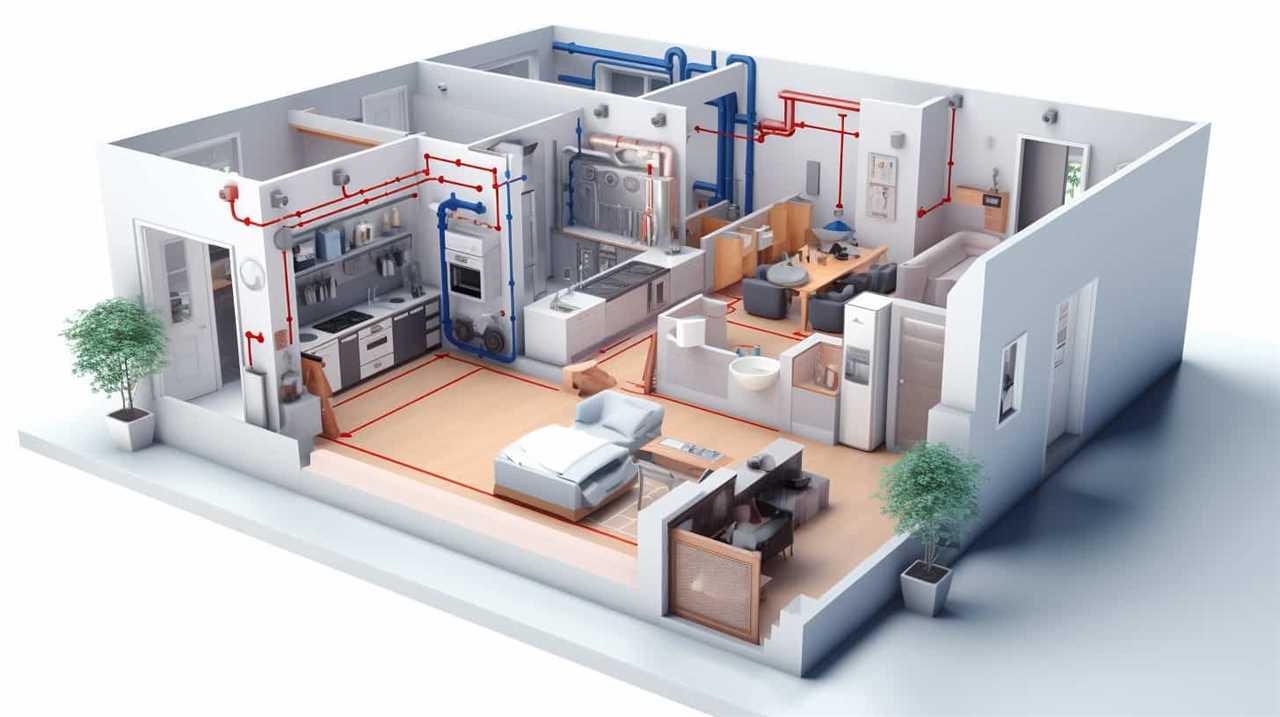
Additionally, consider incorporating energy-saving tips such as proper insulation, smart thermostats, and regular maintenance.
Case Studies: Real-Life Examples of Improved Heat Pump Efficiency in Residential Applications
Examining real-life examples of improved heat pump efficiency in residential applications provides valuable insights into the effectiveness of these upgrades. By analyzing these case studies, we can gain a deeper understanding of the impact that heat pump upgrades can have on energy consumption and cost savings.
Here are three compelling real-life examples:
-
Johnson Residence: After installing a high-efficiency heat pump, the Johnson family experienced a significant decrease in their monthly energy bills. They were thrilled to see a 30% reduction in their heating costs, allowing them to allocate those savings towards other household expenses.

-
Smithson Apartment Complex: By retrofitting their existing heating system with heat pumps, the Smithson Apartment Complex was able to provide their tenants with improved comfort while simultaneously cutting down on their overall energy usage. This upgrade not only increased tenant satisfaction but also reduced the building’s carbon footprint.
-
Thompson Retirement Home: The Thompson Retirement Home implemented a comprehensive heat pump system throughout their facility, resulting in a substantial decrease in energy consumption. This upgrade allowed them to provide a comfortable living environment for their residents while also minimizing operational costs.
These real-life examples demonstrate the tangible benefits of heat pump upgrades in residential applications. By sharing these success stories, we hope to inspire others to consider implementing similar energy-efficient solutions in their own homes or buildings.
Frequently Asked Questions
How Do Heat Pump Efficiency Ratings Compare to Other Heating and Cooling Systems?
Heat pump efficiency ratings, compared to other heating and cooling systems, provide significant benefits. We analyze and compare these ratings to determine the most efficient and cost-effective option for residential use.
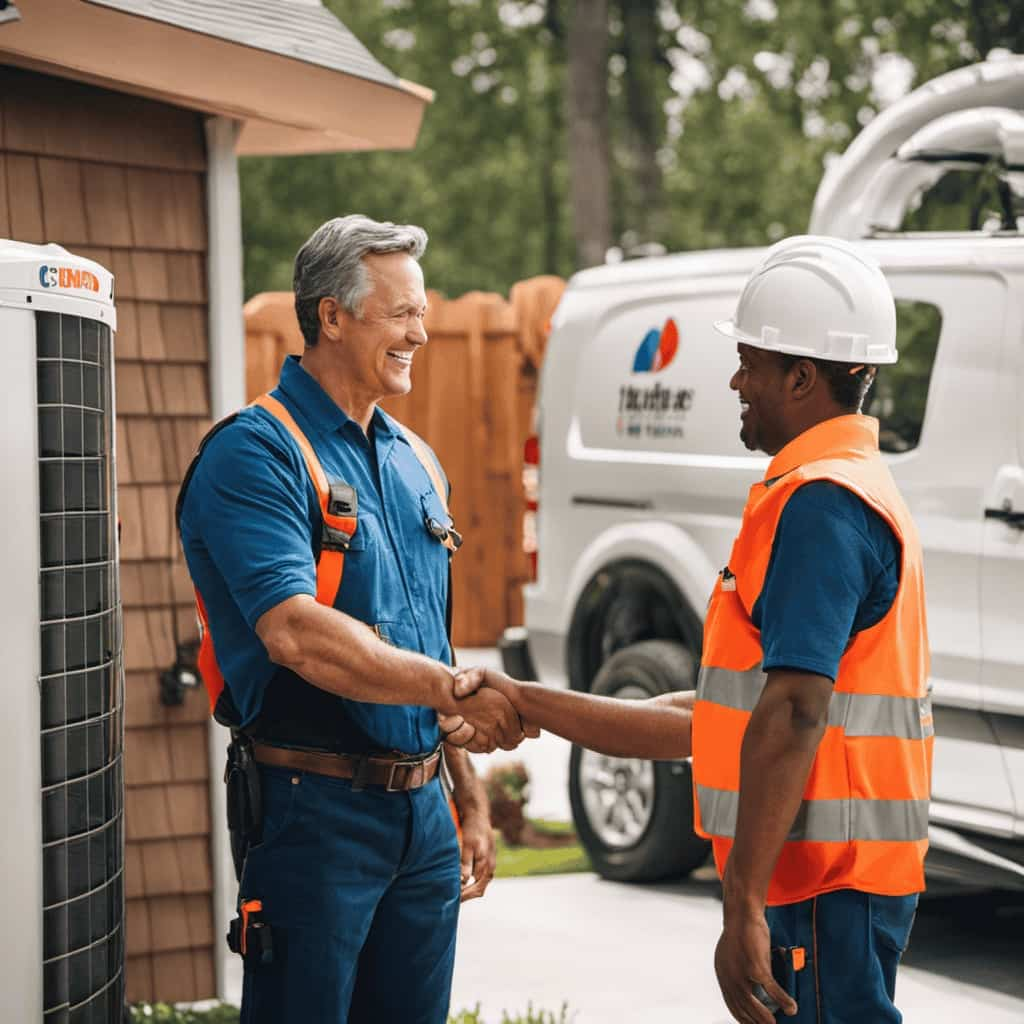
Are There Any Tax Incentives or Rebates Available for Homeowners Who Install Energy-Efficient Heat Pumps?
Yes, there are tax incentives and rebates available for homeowners who install energy-efficient heat pumps. These incentives aim to promote the use of environmentally friendly technologies and can help offset the cost of installation.
What Are the Most Common Mistakes Homeowners Make That Negatively Impact Heat Pump Efficiency?
Common mistakes homeowners make that negatively impact heat pump efficiency include improper installation, neglecting regular maintenance, and setting the thermostat too high. These errors can lead to increased energy consumption and decreased overall energy efficiency.
Can a Heat Pump Be Used as the Sole Heating Source in Colder Climates?
Yes, a heat pump can be used as the sole heating source in colder climates. However, heat pump performance and reliability may be affected in extremely low temperatures, requiring supplemental heating methods to ensure optimal comfort.
How Long Can a Homeowner Expect a Heat Pump to Last Before Needing Replacement or Major Repairs?
A heat pump’s lifespan depends on various factors, but on average, homeowners can expect it to last around 15-20 years. Regular maintenance, such as cleaning filters and coils, can help extend its longevity and minimize the need for major repairs.
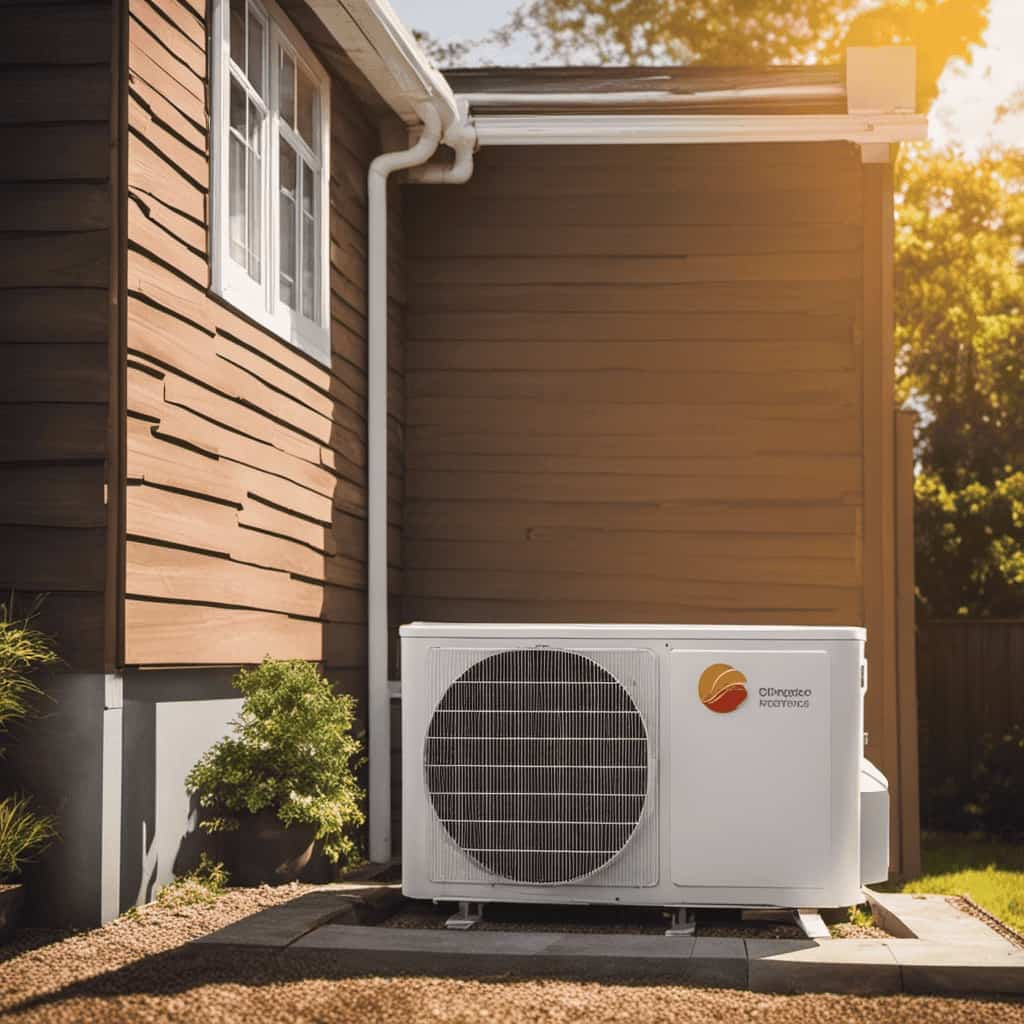
Conclusion
In conclusion, understanding and maximizing heat pump efficiency is crucial for homeowners. By considering factors such as heat pump ratings, proper sizing, insulation, and regular maintenance, homeowners can achieve optimal performance and energy savings.
Just like a well-oiled machine, a properly functioning heat pump can seamlessly and efficiently provide comfort and warmth, creating a cozy and inviting home environment.



